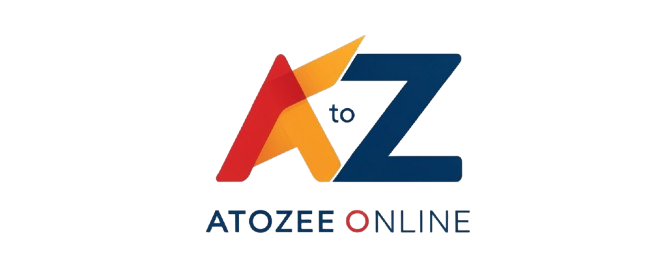Tes Jobs

Tes Jobs
Introduction:
Embarking on a journey to explore the realm of Teaching English as a Second Language (TES) is akin to opening a door to a world of linguistic enrichment and cultural exchange. Beyond the conventional boundaries of education, TES jobs stand as a beacon, inviting individuals to participate in a dynamic and rewarding experience. In this article, we will unravel the significance of TES jobs, delving into their multifaceted nature, exploring the challenges and triumphs, and providing a roadmap for those aspiring to make a mark in this vibrant field. So, fasten your seatbelts as we navigate the exciting terrain of TES, where language becomes a bridge connecting people from diverse backgrounds and fostering a global community of learners.
Importance of TES Jobs
- Teaching English as a Second Language (TES) transcends mere language instruction; it plays a pivotal role in shaping a global community fluent in effective communication. The importance of TES jobs lies in their ability to enhance the overall learning experience for individuals seeking mastery over the English language.
- In classrooms worldwide, TES teachers serve as catalysts for linguistic development, guiding students through the intricacies of grammar, vocabulary, and language nuances. Beyond the conventional educational setting, TES professionals contribute significantly to various sectors, such as corporate training and language learning platforms.
- One of the primary values of TES jobs is their role in breaking down language barriers. As the world becomes more interconnected, proficiency in English becomes a valuable asset, facilitating international communication and collaboration. TES teachers, by imparting language skills, empower learners to participate actively in a globalized society.
- Moreover, TES jobs foster cultural exchange and understanding. Through language instruction, teachers introduce students to diverse cultural perspectives, bridging gaps and promoting a sense of unity in diversity. This cultural sensitivity cultivated in TES classrooms contributes to creating individuals who appreciate and respect the richness of global cultures.
- In essence, the importance of TES jobs extends beyond language proficiency; it cultivates individuals who are not just fluent in English but are also equipped with the cultural awareness and communication skills necessary to thrive in an increasingly interconnected world. As we explore further, we will uncover the various dimensions that make TES jobs an integral part of the educational and societal landscape.
TES Jobs in Different Sectors
- The versatility of Teaching English as a Second Language (TES) extends far beyond the traditional classroom setting, creating a demand for skilled TES professionals in various sectors. Let’s explore how TES jobs have diversified and found applications in education, corporate training, and language learning platforms.
- Education Sector:
In the education sector, TES teachers play a crucial role in facilitating language learning at different levels. From primary schools to universities, these educators contribute to building a strong foundation in English language skills. TES professionals not only teach grammar and vocabulary but also foster a love for language learning, creating a positive and engaging environment for students. - Corporate Training:
TES jobs have gained prominence in the corporate world as businesses recognize the importance of effective communication in a globalized market. TES trainers are employed to enhance the English language proficiency of employees, ensuring clear and concise communication in professional settings. This sector values TES professionals for their ability to improve business communication and cross-cultural understanding. - Language Learning Platforms:
With the rise of online education, language learning platforms have become a thriving space for TES jobs. These platforms connect TES teachers with students from around the world, offering personalized language instruction through virtual classrooms. TES professionals on these platforms cater to diverse learning needs, adapting their teaching styles to accommodate individual preferences and goals.
The adaptability of TES jobs to these diverse sectors showcases the universal demand for English language skills. Whether in traditional classrooms, corporate boardrooms, or virtual learning spaces, TES professionals play a vital role in shaping language competencies and preparing individuals for success in a variety of contexts. As we delve deeper, we’ll uncover the qualities that make a TES teacher successful across these diverse .sectors

Qualities of a Successful TES Teacher
Teaching English as a Second Language (TES) is not merely about imparting language skills; it’s about creating an environment conducive to effective learning and cultural exchange. Successful TES teachers possess a unique set of qualities that go beyond linguistic proficiency. Here are some key qualities that distinguish a successful TES teacher:
- Patience:
TES teachers understand that language acquisition is a gradual process. Patience is a virtue when guiding learners through the challenges of grammar, pronunciation, and comprehension.
- Cultural Sensitivity:
Recognizing and respecting cultural differences is paramount. Successful TES teachers create inclusive environments where students feel comfortable expressing themselves, regardless of their cultural background.
- Adaptability:
Each student is unique, and successful TES teachers adapt their teaching styles to cater to diverse learning needs. Flexibility in approach ensures that every student can grasp language concepts effectively. - Enthusiasm for Teaching:
Passion is contagious. Successful TES teachers bring enthusiasm to the classroom, fostering a positive and engaging atmosphere that motivates students to actively participate in the learning process. - Effective Communication Skills:
Beyond teaching language skills, TES professionals excel in communication. Clarity in explanations, active listening, and the ability to convey complex ideas in a simple manner contribute to effective language instruction. - Creativity in Lesson Planning:
Successful TES teachers go beyond textbooks, integrating creative and interactive elements into their lessons. Utilizing multimedia, games, and real-life scenarios keeps lessons dynamic and captivating. - Empathy:
Understanding the challenges that learners face fosters empathy. Successful TES teachers empathize with their students, providing encouragement and support to navigate the complexities of language acquisition. - Adaptation to Technology:
In the digital age, technology is a valuable tool for language instruction. Successful TES teachers embrace technology, incorporating it into lessons to enhance engagement and provide additional learning resources. - Continuous Self-Improvement:
The learning never stops for TES teachers. Successful professionals engage in continuous professional development, staying updated on language trends, teaching methodologies, and cultural shifts. - Open-mindedness:
Successful TES teachers are open to new ideas and perspectives. They create a space where students feel comfortable expressing themselves, fostering an environment of mutual respect and understanding.
Advantages and Challenges
Teaching English as a Second Language (TES) comes with a myriad of advantages, offering a fulfilling and impactful career path. However, like any profession, TES jobs also present certain challenges. Let’s delve into both the advantages and challenges to provide a comprehensive understanding of what to expect in the dynamic field of TES.
Advantages of TES Jobs;
- Global Impact:
TES teachers contribute to a global community by empowering individuals with the ability to communicate in English. This skill opens doors to international opportunities and fosters cross-cultural understanding.
- Rewarding Cultural Exchange:
TES jobs facilitate meaningful cultural exchange. Teachers and students bring diverse perspectives to the learning environment, creating a rich tapestry of experiences that go beyond language acquisition.
- Versatility in Career Opportunities:
TES professionals have the flexibility to work in various sectors, including education, corporate training, and online language platforms. This versatility provides opportunities for career growth and exploration.
- Personal and Professional Development:
TES teachers continually refine their communication, adaptability, and leadership skills. The profession offers a unique blend of personal and professional development, enhancing not only teaching abilities but also overall life skills.
- Positive Impact on Students’ Lives:
Witnessing students progress in their language proficiency is one of the most gratifying aspects of TES jobs. Teachers play a crucial role in shaping the future success of their students.
- Language Barriers:
Overcoming language barriers can be a significant challenge. TES teachers must employ effective strategies to ensure students comprehend and apply new language concepts.
- Cultural Sensitivity:
Managing cultural differences in the classroom requires finesse. TES teachers need to be aware of diverse cultural norms and adapt their teaching styles to create an inclusive learning environment.
- Adapting to Different Learning Styles:
Students come with varied learning styles and preferences. Tailoring lessons to accommodate these differences while maintaining effective instruction is a continual challenge.
- Online Teaching Challenges:
With the rise of online education, TES teachers face the task of engaging students in virtual environments. Technological challenges and maintaining student engagement can pose hurdles.
- Work-Life Balance:
The dedication required for effective TES teaching, especially for those working across different time zones, may impact work-life balance. Striking a harmonious balance becomes crucial for long-term sustainability in the profession.
How to Find TES Job Opportunities
Securing a Teaching English as a Second Language (TES) job involves strategic planning and a proactive approach. Whether you’re a seasoned educator or just starting your TES career, here are effective strategies to find TES job opportunities:
- Online Platforms:
Explore dedicated online platforms that connect TES teachers with job opportunities. Websites like Dave’s ESL Cafe, TEFL.com, and LinkedIn often feature job listings from schools and language institutions worldwide.
- Networking:
Build a professional network within the TES community. Attend conferences, workshops, and webinars to connect with other educators, school representatives, and potential employers.
- Certification:
Obtain relevant certifications such as TESOL (Teaching English to Speakers of Other Languages) or TEFL (Teaching English as a Foreign Language). Many employers prioritize candidates with recognized certifications, enhancing your marketability in the TES job market.
- Recruitment Agencies:
Consider partnering with TES-focused recruitment agencies. These agencies often have connections with schools and language institutions globally, helping match qualified teachers with suitable job opportunities.
- Job Fairs:
Attend TES job fairs, either in person or virtually. These events bring together schools and educators, providing a platform for direct interaction and potential job interviews. Job fairs can be particularly beneficial for those seeking international TES opportunities.
- School Websites:
Explore the websites of schools, language institutes, and educational organizations directly. Many institutions post their job openings on their official websites. Regularly check the career or employment sections for updates.
- Social Media:
Leverage social media platforms, especially professional groups and forums related to TES. Platforms like Facebook and Twitter often host groups where teachers share job opportunities, experiences, and advice. Engage with these communities to stay informed about potential openings.
- Alumni Networks:
Tap into your educational network, including alumni associations. Alumni networks can provide valuable connections and insights into TES job opportunities, especially if your alma mater has a strong focus on language education.
- Local Language Centers:
Explore opportunities with local language centers, community colleges, or adult education programs. These institutions often have a continuous need for TES teachers, and applying locally can be a great way to gain experience.
- Freelancing Platforms:
Consider freelancing platforms that connect TES teachers with students for one-on-one online lessons. While not traditional teaching roles, these platforms offer flexibility and can be a stepping stone to more formal TES positio.
By combining these strategies, you can create a well-rounded approach to finding TES job opportunities that align with your skills, preferences, and career goals. As we explore effective ways to tackle language barriers in TES, remember that the journey to a rewarding TES career often begins with proactive job searching.

Tackling Language Barriers
Effectively navigating language barriers is a fundamental skill for Teaching English as a Second Language (TES) professionals. The diverse backgrounds of learners bring unique challenges, but with strategic approaches, TES teachers can create an inclusive and effective learning environment. Here are key strategies for tackling language barriers in TES:
- Clear Communication:
Emphasize clear and concise communication. Use simple language, avoid jargon, and provide ample examples to ensure students grasp new concepts.
- Visual Aids and Multimedia:
Utilize visual aids and multimedia to support verbal instructions. Images, videos, and interactive materials can enhance understanding, especially for students with varying language proficiency levels.
- Encourage Active Participation:
Foster an environment that encourages active participation. Engage students in discussions, group activities, and presentations. This promotes language practice and builds confidence in using English.
- Peer Interaction:
Promote peer interaction among students. Pairing individuals with different language backgrounds encourages language exchange and collaborative learning, reducing the reliance on the teacher as the sole source of language input.
- Language Games:
Incorporate language games into lessons. Games make learning enjoyable and provide a context for using English in a relaxed setting, helping students overcome inhibitions.
- Provide Written Instructions:
Accompany verbal instructions with written materials. This dual approach caters to different learning styles and offers additional support for those grappling with language comprehension.
- Individualized Support:
Offer individualized support to students struggling with specific language challenges. Providing extra resources, one-on-one sessions, or additional practice exercises can address individual needs.
- Cultural Sensitivity Training:
Incorporate cultural sensitivity training into the curriculum. Understanding cultural nuances helps teachers adapt their communication style and better connect with students from diverse backgrounds.
- Use Real-life Scenarios:
Relate language lessons to real-life scenarios. Creating connections between language learning and practical applications helps students see the relevance of their new language skills.
- Regular Assessments:
Conduct regular assessments to gauge language proficiency. This allows teachers to identify areas of improvement and tailor future lessons to address specific language challenges.
- Cultivate Patience:
Cultivate patience, both for yourself and your students. Language acquisition is a gradual process, and acknowledging the journey’s pace is essential for creating a supportive learning environment.
By integrating these strategies into TES teaching practices, educators can effectively tackle language barriers and create an inclusive space for diverse learners. As we explore the role of technology in TES and share success stories, remember that overcoming language barriers is a dynamic and continuous process that evolves with each teaching experience.
Technology in TES
In the ever-evolving landscape of education, technology plays a transformative role in enhancing the Teaching English as a Second Language (TES) experience. Integrating technology into TES not only enriches the learning process but also equips teachers with powerful tools to engage students and foster language proficiency. Here are ways in which technology is shaping the TES field:
- Interactive Learning Platforms:
Online platforms and learning management systems provide a dynamic space for TES. These platforms offer interactive lessons, multimedia resources, and real-time feedback, creating an engaging environment for language learners.
- Virtual Classrooms:
Virtual classrooms break down geographical barriers, allowing TES teachers to connect with students globally. Video conferencing tools facilitate real-time interaction, enabling teachers to conduct lessons, workshops, and language exercises seamlessly.
- Language Apps and Software:
Language learning apps and software offer personalized learning experiences. These tools often incorporate gamification elements, making language acquisition enjoyable and providing students with additional opportunities for practice.
- AI-powered Language Tools:
Artificial Intelligence (AI) is making its mark in TES with intelligent language tools. AI algorithms can assess students’ language proficiency, generate customized learning plans, and provide instant feedback, tailoring the learning experience to individual needs.
- Multimedia Resources:
The integration of multimedia resources such as videos, podcasts, and interactive presentations enhances TES lessons. These resources expose students to diverse accents, cultural nuances, and real-life language usage.
- Online Collaboration Platforms:
Collaboration platforms facilitate group projects, language exchange programs, and peer-to-peer learning. TES teachers can leverage these platforms to encourage students to collaborate, discuss topics, and practice language skills in a collaborative virtual environment.
- Digital Language Assessment Tools:
Digital assessment tools streamline the evaluation process. Online quizzes, interactive assignments, and automated grading systems enable TES teachers to assess language proficiency efficiently and provide timely feedback.
- Social Media Integration:
Leveraging social media platforms as supplementary tools fosters informal language learning. TES teachers can create language-focused groups, share relevant content, and encourage students to engage in English conversations outside the classroom.
- Virtual Reality (VR) Experiences:
Virtual Reality offers immersive language experiences. TES teachers can transport students to virtual English-speaking environments, providing a realistic context for language practice and cultural understanding.
- Online Language Communities:
Online language communities connect TES learners with native speakers. These communities provide a platform for language exchange, enabling students to practice conversational English in real-world contexts.
- E-books and Digital Texts:
E-books and digital texts make learning materials easily accessible. TES teachers can curate digital libraries, giving students instant access to a variety of reading materials that cater to different language proficiency levels.
- Adaptive Learning Systems:
Adaptive learning systems adjust content based on individual progress. These systems analyze students’ strengths and weaknesses, tailoring lessons to address specific language challenges and optimize the learning journey.
As technology continues to evolve, its role in TES will likely expand, offering innovative solutions for language instruction. The effective integration of technology into TES not only enhances the learning experience but also prepares students for a digital-centric global society. As we explore success stories in TES, the impact of technology becomes evident in the transformative journeys of both teachers and learners.

Success Stories
Behind the realm of Teaching English as a Second Language (TES) lie numerous success stories—testimonies of individuals whose lives have been transformed through language education. These success stories illuminate the profound impact that TES teachers and the learning process can have on students. Here are a few inspiring narratives:
- Bridging Cultural Divides:
In a diverse classroom where students hailed from various countries, a TES teacher facilitated an environment of cultural exchange. Through language lessons, students not only learned English but also shared their unique cultural perspectives. The success lay in fostering mutual understanding, breaking down stereotypes, and creating a harmonious learning community.
- Empowering Professional Growth:
A professional seeking career advancement enrolled in a TES program to improve English proficiency. The TES teacher tailored lessons to the specific industry language requirements. The student’s success was marked not only by enhanced language skills but also by securing a promotion due to improved communication in the workplace.
- Overcoming Language Barriers:
An immigrant student faced challenges in adapting to a new country due to language barriers. With the support of a dedicated TES teacher, the student progressed significantly in English proficiency. The success story unfolded as the student gained confidence, secured employment, and actively participated in the community, breaking the isolation caused by language differences.
- Global Language Ambassadors:
Students from a TES program initiated a language exchange initiative, connecting with English learners from different parts of the world. The success resonated in the friendships formed, the cultural understanding fostered, and the newfound confidence among students as they became ambassadors of the English language in their communities.
- Online Learning Triumph:
In the era of virtual education, a TES teacher successfully transitioned to online teaching. The success lay in maintaining engagement, utilizing interactive tools, and creating a virtual space where students felt connected. The students not only adapted to the new learning format but thrived in the online TES environment.
- Academic Excellence through TES:
Students preparing for academic exams in English achieved exceptional results with the guidance of a TES jobs teacher. The success story unfolded as students not only excelled in language proficiency but also gained the necessary skills to navigate academic challenges, opening doors to higher education opportunities.
- Community Language Programs:
A TES jobs teacher initiated a community language program for adults, offering evening classes. The success was evident in the improved communication skills of participants, leading to increased confidence in their daily interactions, job interviews, and community engagement.
- Lifelong Language Learners:
TES jobs teachers inspired a group of learners to adopt a mindset of lifelong language learning. Beyond achieving language proficiency, the success story unfolded in the students’ continued passion for exploring new languages, cultures, and embracing the joy of constant intellectual growth.
These success stories underscore the transformative power of TES jobs in diverse contexts. Beyond linguistic proficiency, TES jobs teachers contribute to the personal, professional, and cultural growth of their students. As we explore professional development in TES jobs and offer tips for building a TES jobs career, these success stories serve as a testament to the lasting impact of language education on individuals and communities.
Professional Development in TES
Teaching English as a Second Language (TES) is a dynamic field that constantly evolves with language trends, educational methodologies, and technological advancements. Professional development is not only beneficial but essential for TES jobs teachers to stay current, refine their skills, and meet the diverse needs of learners. Here are key avenues for continuous professional development in TES:
- Advanced Certifications:
Pursuing advanced certifications, such as a Master’s in TESOL (Teaching English to Speakers of Other Languages), provides in-depth knowledge and enhances credibility. Specialized certifications in areas like Business English or Young Learners add valuable expertise.
- Attend Workshops and Conferences:
Regularly attend TES jobs workshops, conferences, and seminars. These events offer opportunities to learn about the latest teaching methodologies, linguistic research, and best practices. Networking with other educators and experts enhances professional connections.
- Online Courses and Webinars:
Engage in online courses and webinars offered by reputable institutions. These resources cover a wide range of topics, from technology integration to language assessment strategies, allowing teachers to expand their knowledge at their own pace.
- Participate in Professional Associations:
Join TES-focused professional associations such as TESOL International Association. Membership provides access to resources, journals, and collaborative forums where teachers can share experiences and gain insights from peers.
- Reflective Practice:
Cultivate reflective practice. Regularly reflect on teaching experiences, assess lesson effectiveness, and identify areas for improvement. Journaling or participating in reflective communities encourages ongoing self-assessment.
- Collaborative Lesson Planning:
Collaborate with fellow TES jobs teachers on lesson planning. Joint planning allows for the exchange of ideas, teaching strategies, and constructive feedback, fostering a collaborative learning environment among educators.
- Language Immersion Programs:
Participate in language immersion programs. Immersing oneself in a new language environment enhances language skills, cultural understanding, and provides a unique perspective that can be applied to TES jobs teaching.
- Action Research Projects:
Undertake action research projects within the classroom. Investigating specific teaching strategies, assessing their impact, and adapting approaches based on research findings contribute to continuous improvement.
- Mentorship Programs:
Seek mentorship from experienced TES jobs educators. Mentorship programs provide guidance, insights, and a platform for sharing challenges and successes, accelerating professional growth.
- Language Study Abroad:
Consider language study abroad programs. Immersing oneself in a foreign language environment not only enhances language proficiency but also deepens cultural awareness, providing valuable perspectives for TES jobs teaching.
- Incorporate Feedback:
Actively seek feedback from students and peers. Constructive feedback helps identify areas for improvement and reinforces effective teaching strategies, contributing to ongoing professional development.
- Stay Informed on Educational Technology:
Stay abreast of educational technology trends. Incorporate new tools and platforms into teaching to enhance engagement and provide students with a modern, technology-infused language learning experience.
Continual professional development in TES jobs is a commitment to excellence and ensures that teachers remain innovative, adaptable, and well-equipped to meet the evolving needs of language learners. As we explore tips for building a TES jobs career, the emphasis on ongoing learning becomes a cornerstone for long-term success in this dynamic field.

Conclusion
- In the dynamic field of Teaching English as a Second Language (TES), the journey is marked by a tapestry of challenges, successes, and continual growth. As we navigate the nuances of language barriers, cultural diversity, and the ever-evolving landscape of education, the heart of TES jobs lies in its transformative power.
- TES jobs teachers, armed with passion and dedication, stand as architects of change. They bridge linguistic divides, foster cultural understanding, and empower learners to navigate a globalized world. The challenges encountered, from adapting to online teaching to addressing diverse learning styles, serve as stepping stones for innovative solutions and enriched teaching practices.
- The future of TES jobs holds exciting prospects as technology integrates seamlessly into language education, creating immersive experiences and expanding global collaboration. The emphasis on soft skills, cultural sensitivity, and specialized TES jobs roles underscores the holistic nature of language learning, preparing students not just as proficient speakers but as confident and adaptable global citizens.
- As educators strive to overcome challenges, embrace future trends, and continually refine their craft, the impact of TES jobs extends far beyond language acquisition. It’s about shaping individuals who contribute meaningfully to a diverse and interconnected world. The success stories of students mastering English, overcoming barriers, and thriving in their pursuits stand as a testament to the profound influence of TES jobs on lives.
- In conclusion, the journey in TES jobs is a dynamic narrative, where each challenge met, lesson learned, and success celebrated contributes to the ever-evolving story of language education. The dedication of TES jobs professionals, coupled with an unwavering commitment to excellence and continuous learning, ensures that the future of TES jobs is not just promising but transformative. As we look ahead, the TES jobs community embraces the possibilities, guided by a shared belief in the power of language to inspire, connect, and create a brighter future for all.
TO CHECK LATEST UPDATES ON CIVIL SERVICE JOBS CLICK HERE
FAQs
Q: How can I find TES job opportunities?
Explore dedicated online platforms like Dave’s ESL Cafe, attend TES job fairs, network within the TES jobs community, and consider recruitment agencies. Regularly check school websites, social media groups, and alumni networks for updates.
Q: What qualifications are necessary for a TES jobs career?
A minimum of a bachelor’s degree is often required. Consider obtaining certifications such as TESOL or TEFL to enhance your credentials. Advanced degrees and specialized certifications can also contribute to career advancement.
Q: How do I overcome language barriers in TES?
Use clear communication, incorporate visual aids and multimedia, encourage active participation, promote peer interaction, and provide written instructions. Embrace language games, offer individualized support, and conduct regular assessments to gauge proficiency.
Q: What are the future trends in TES jobs?
Future trends include hybrid teaching models, AI-enhanced language learning, virtual reality integration, global collaboration programs, and an increased focus on soft skills. The growth of online platforms and specialized TES jobs roles is also anticipated.
Q: How can TES jobs teachers adapt to online teaching?
Embrace technology, undergo training for online teaching tools, utilize interactive platforms, and stay updated on the latest trends. Create engaging virtual classrooms, incorporate multimedia resources, and maintain regular communication with students.





